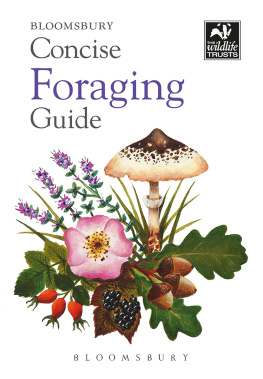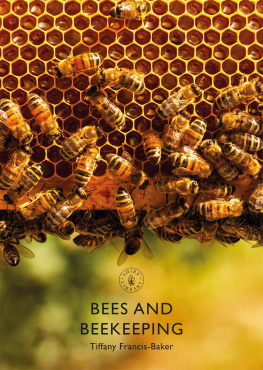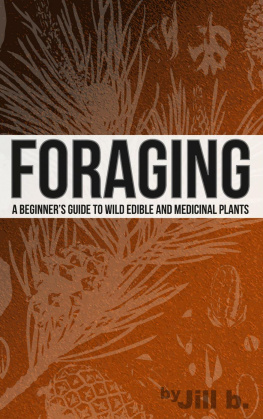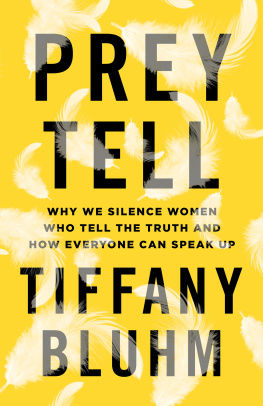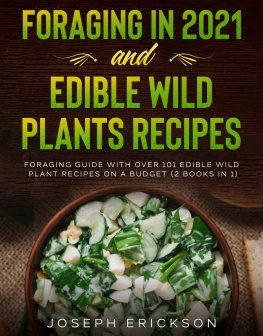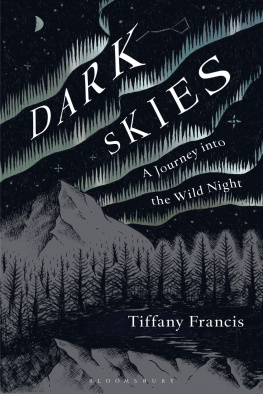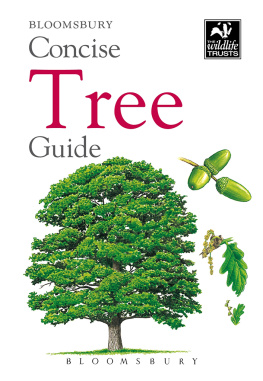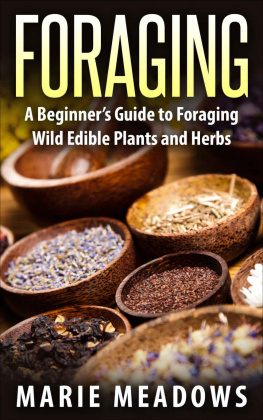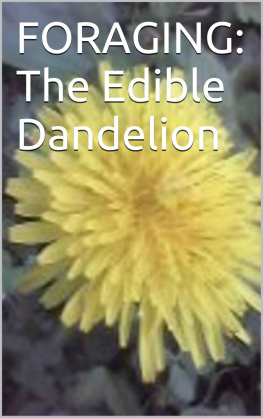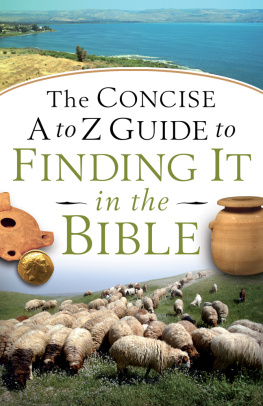Tiffany Francis-Baker - Concise Foraging Guide
Here you can read online Tiffany Francis-Baker - Concise Foraging Guide full text of the book (entire story) in english for free. Download pdf and epub, get meaning, cover and reviews about this ebook. year: 2021, publisher: Bloomsbury Publishing, genre: Home and family. Description of the work, (preface) as well as reviews are available. Best literature library LitArk.com created for fans of good reading and offers a wide selection of genres:
Romance novel
Science fiction
Adventure
Detective
Science
History
Home and family
Prose
Art
Politics
Computer
Non-fiction
Religion
Business
Children
Humor
Choose a favorite category and find really read worthwhile books. Enjoy immersion in the world of imagination, feel the emotions of the characters or learn something new for yourself, make an fascinating discovery.
- Book:Concise Foraging Guide
- Author:
- Publisher:Bloomsbury Publishing
- Genre:
- Year:2021
- Rating:3 / 5
- Favourites:Add to favourites
- Your mark:
- 60
- 1
- 2
- 3
- 4
- 5
Concise Foraging Guide: summary, description and annotation
We offer to read an annotation, description, summary or preface (depends on what the author of the book "Concise Foraging Guide" wrote himself). If you haven't found the necessary information about the book — write in the comments, we will try to find it.
Concise Foraging Guide — read online for free the complete book (whole text) full work
Below is the text of the book, divided by pages. System saving the place of the last page read, allows you to conveniently read the book "Concise Foraging Guide" online for free, without having to search again every time where you left off. Put a bookmark, and you can go to the page where you finished reading at any time.
Font size:
Interval:
Bookmark:


BLOOMSBURY WILDLIFE
Bloomsbury Publishing Plc
50 Bedford Square, London, WC1B 3DP, UK
29 Earlsfort Terrace, Dublin 2, Ireland
This electronic edition published in 2021 by Bloomsbury Publishing Plc
BLOOMSBURY, BLOOMSBURY WILDLIFE and the Diana logo are trademarks of Bloomsbury Publishing Plc
First published in Great Britain 2020
Copyright Tiffany Francis-Baker, 2020
Cover and prelims illustrations Tiffany Francis-Baker, 2020
All other illustrations Bloomsbury Publishing, 2020
Tiffany Francis-Baker has asserted her right under the Copyright, Designs and Patents Act, 1988, to be identified as Author of this work
For legal purposes the constitute an extension of this copyright page
All rights reserved
You may not copy, distribute, transmit, reproduce or otherwise make available this publication (or any part of it) in any form, or by any means (including without limitation electronic, digital, optical, mechanical, photocopying, printing, recording or otherwise), without the prior written permission of the publisher. Any person who does any unauthorised act in relation to this publication may be liable to criminal prosecution and civil claims for damages.
No responsibility for loss, injury or illness caused to any individual or organisation acting on or refraining from action as a result of the material in this publication can be accepted by Bloomsbury Publishing or the author.
A catalogue record for this book is available from the British Library
Library of Congress Cataloguing-in-Publication data has been applied for
ISBN: 978-1-4729-8474-6 (PB)
ISBN: 978-1-4729-8475-3 (eBook)
ISBN: 978-1-4729-8476-0 (ePDF)
To find out more about our authors and their books please visit www.bloomsbury.com where you will find extracts, author interviews and details of forthcoming events, and to be the first to hear about latest releases and special offers, sign up for our newsletters.
Contents

The Wildlife Trusts are made up of 46 independent charities, covering the whole of the UK and the Isle of Man and Alderney. Together, The Wildlife Trusts are the largest voluntary organisation of nature lovers who are dedicated to protecting and restoring wildlife and wild places everywhere on land and at sea. They are supported by 860,000 members, including 150,000 young people in their junior branch, Wildlife Watch. Every year The Wildlife Trusts work with thousands of schools and community groups, and their nature reserves and visitor centres receive millions of visitors.
The Wildlife Trusts work in partnership with hundreds of landowners and businesses in the UK. Building on their existing network of 2,300 nature reserves, The Wildlife Trusts are advocating for a wilder future, with 30% of land and sea restored for nature by 2030. This will be achieved by restoring, recreating and reconnecting wildlife habitat and by changing policy, and is paramount to addressing the nature and climate emergency in the UK.
In The Wildlife Trusts vision of a wilder future, the natural environment is adapting well to a changing climate, and people are inspired by our wildlife and value it for the many ways in which it supports our quality of life. Healthy ecosystems provide us with many services, including carbon storage, clean air and water, as well as flood mitigation.
All 46 Wildlife Trusts are members of the Royal Society of Wildlife Trusts (registered charity number 207238). To find your Wildlife Trust, visit wildlifetrusts.org
The art of foraging is almost as ancient as humanity itself. Thousands of years ago, before early humans turned to farming at the end of the Stone Age, they sustained themselves by hunting wild animals and gathering plants to feed their communities, a behaviour so vital to their survival that it was the only form of sustenance for 90 per cent of human history. In a world before online shopping and takeaways, foraging was an essential part of daily life. Nowadays we are fortunate in the UK to have access to secure, affordable and varied food production, so is it still worth learning how to forage our own food from the wild?
In modern-day Britain, most people who forage plants and mushrooms do so for the enjoyment, rather than necessity. Yet foraging can still be an important part of modern human survival in developed countries and across all cultures. In the UK during World War II, rosehip syrup became a popular source of vitamin C when citrus fruits became more difficult to import. In Copenhagen, the famed Noma restaurants wild food menu has encouraged a resurgence in a once-common Scandinavian pastime. And in Japan, citizens have relied on the art of seeking sansai (mountain vegetables) to stave off starvation in times of war, drought and natural disaster.

Today, foraging wild food can be an ethical and rewarding hobby that helps us reconnect with both the natural world and the food on our plate, two areas that, to our detriment, we have become disengaged with as a species. When carried out sustainably and respectfully, foraging is an environmentally friendly way to source food, as there is no reliance on chemicals and pesticides, no disposable packaging, the plants are seasonal and organic, and there is no carbon footprint from importing and transportation. Even better, foraging is essentially free and accessible to everyone, whether you live in the countryside or the inner-city.
It is also a great way to spend more time in nature and connect with the world around us. Not only does foraging encourage us to learn about different types of trees, shrubs, seaweeds, herbs, nuts, fruits, seeds and mushrooms, it also helps us engage with the landscape as a whole. When we keep a closer eye on the natural world, we are more likely to notice wildlife such as birds and insects, protect their habitats and appreciate the fragility and complexity of our ecosystems. Time spent outdoors has been proven to enhance our physical and mental wellbeing, and foraging is an easy way to reconnect with the seasons and cycles of nature, as well as exploring the origins of our food.
A good forager is an ethical one. To ensure plant populations remain healthy and leave plenty for the birds and other wildlife with whom we share our wild food, forage only the amounts you need. Where species are listed as rare or uncommon, pick them only in tiny quantities. Its sensible to work out how much you genuinely need before you harvest any species as its easy to get carried away and pick more than you can cook with when you come across an abundant plant. It is also important to consider the different impacts on habitats of picking leaves or flowers or uprooting an entire plant. A partially foraged plant can usually regenerate and survive, but an uprooted plant is gone forever.
Before you forage, you must know the legalities of picking wild plants in your country as well as the area you are in since local bylaws may be in place to prevent foraging. Remember to keep to public places and steer clear of private land. Never forage plants from nature reserves or other wildlife-sensitive or protected areas. And avoid foraging along the edges of large agricultural fields which have often been treated with chemicals and alongside busy roads where airborne pollutants may be an issue. Similarly, avoid popular dog-walking routes. Pregnant women should be careful with one or two species, such as bog myrtle and chamomile, as these can cause complications. In terms of identification, the golden rule is that if youre not 100 per cent sure what something is, dont pick it. There are many other resources including the internet that can help you clarify what youve found. However, if youre still not entirely sure about a new species, it simply isnt worth the risk.
Font size:
Interval:
Bookmark:
Similar books «Concise Foraging Guide»
Look at similar books to Concise Foraging Guide. We have selected literature similar in name and meaning in the hope of providing readers with more options to find new, interesting, not yet read works.
Discussion, reviews of the book Concise Foraging Guide and just readers' own opinions. Leave your comments, write what you think about the work, its meaning or the main characters. Specify what exactly you liked and what you didn't like, and why you think so.

